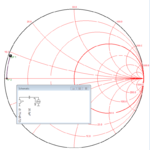se7ensong
Junior Member level 1
Hello there,
I am designing an near field inductive link at 900 MHz. For some reason, I need to 1W at transmitting coil which is a serier LC circuit. I am trying to drive it with a 900MHz 30dBm Power Amplifier.
My question is, do I need to match the impedances of the PA and the LC in resonance?
If so, how should I do it? I have read something about the matching of loop antenna, but they are all parallel LC circuit.
If not, why?
Below are the smith chart and its schematic. TP2 is point at resonance, TP1 is the coil it self tested using a PNA at 900 MHz.
https://obrazki.elektroda.pl/78_1328287668.png
Thank you in advance!
I am designing an near field inductive link at 900 MHz. For some reason, I need to 1W at transmitting coil which is a serier LC circuit. I am trying to drive it with a 900MHz 30dBm Power Amplifier.
My question is, do I need to match the impedances of the PA and the LC in resonance?
If so, how should I do it? I have read something about the matching of loop antenna, but they are all parallel LC circuit.
If not, why?
Below are the smith chart and its schematic. TP2 is point at resonance, TP1 is the coil it self tested using a PNA at 900 MHz.
https://obrazki.elektroda.pl/78_1328287668.png
Thank you in advance!
